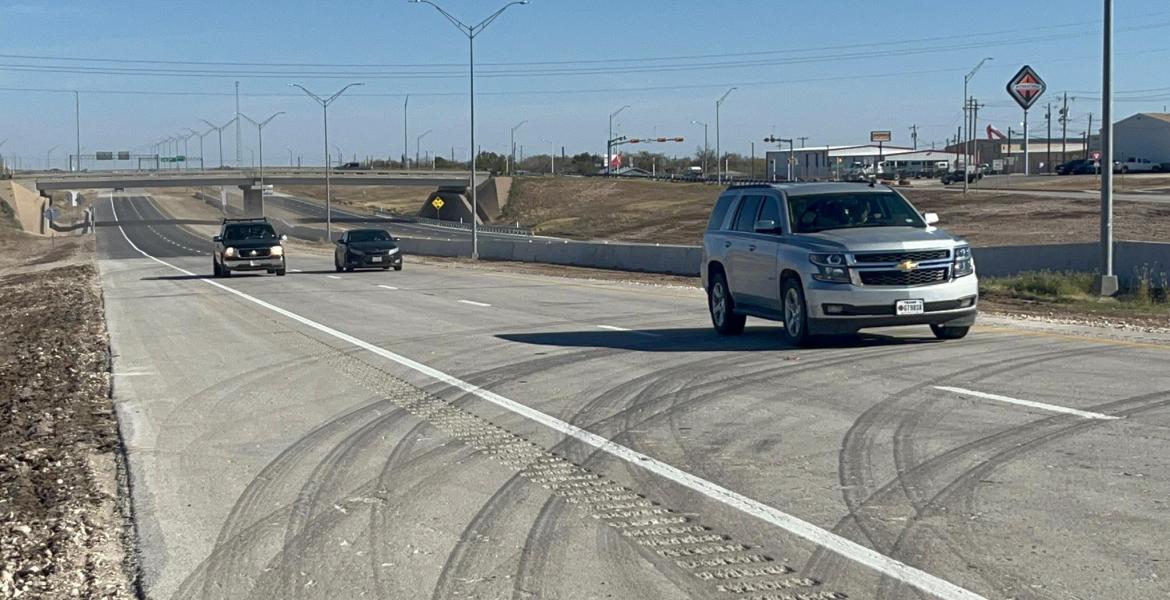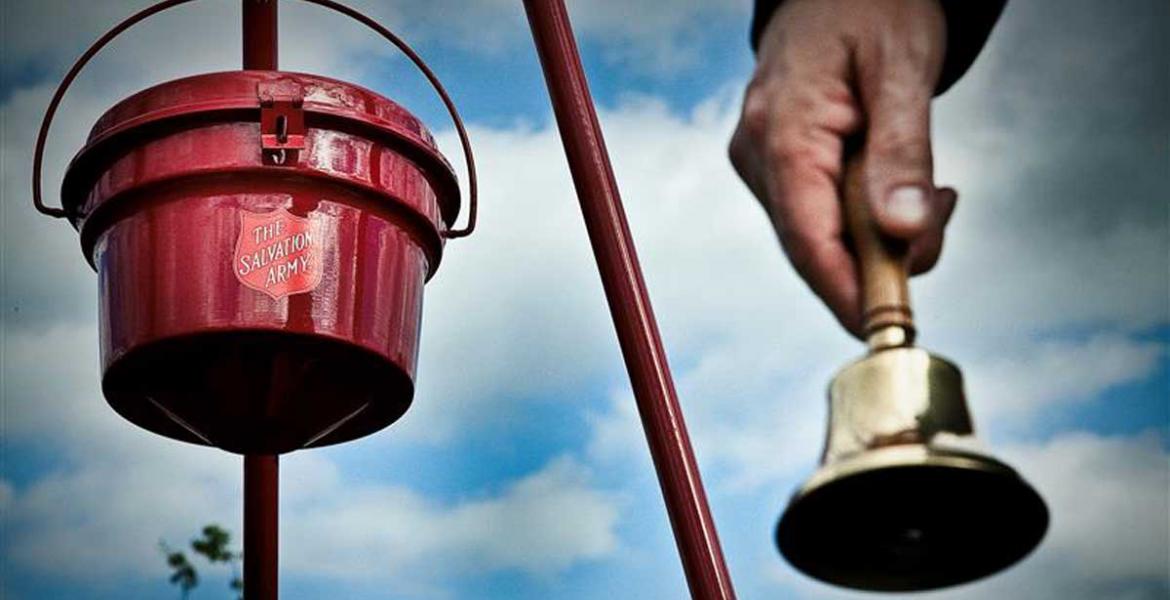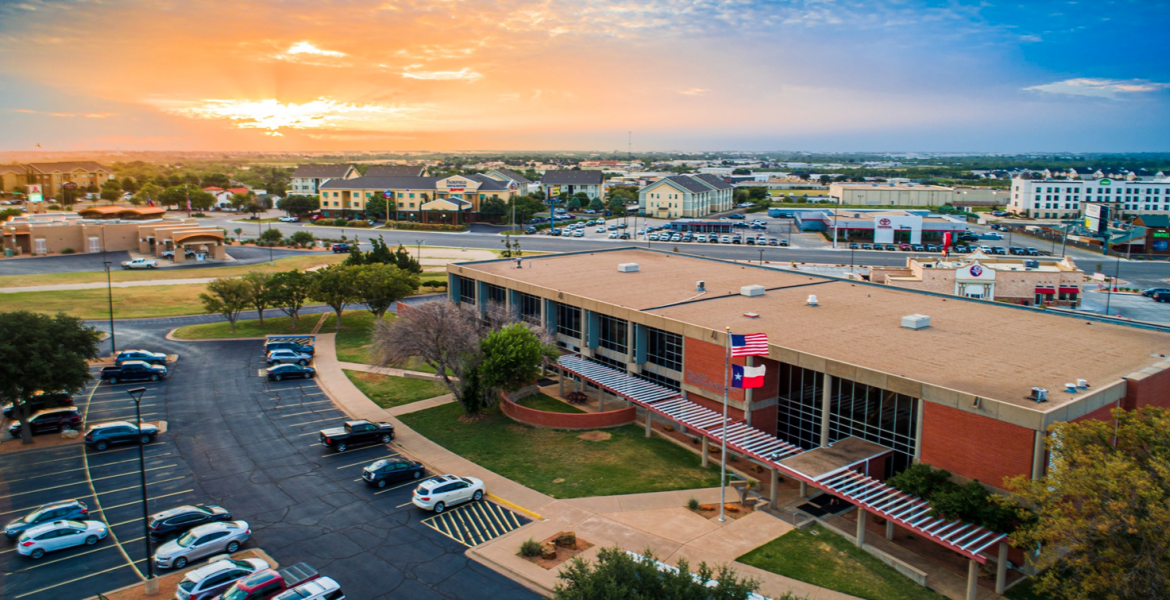The Environmental Protection Agency (EPA) has recognized a visionary, 21-year effort to protect the Concho River watershed in San Angelo. In a Nov. 2015 report titled “Implementing Stormwater Practices Improves Concho River Aquatic Habitat” (download the *pdf here) published in Washington, D.C., San Angelo’s community leaders were recognized for a holistic approach and effort over two decades to improve the Concho River’s water quality.
Chuck Brown, Director of Operations for the Upper Colorado River Authority (UCRA), simplified the meaning of the EPA’s study.
As San Angelo grew, more pavement, parking lots, and etc. increased the amount of impervious surfaces, Brown said. More parking lots, streets, and pavement in general increased surface water runoff into the Concho Rivers, he explained. The water did not have the opportunity to soak into the ground and experience a natural filtration before reaching the rivers. Instead, the streets had become paved, impervious runoff channels delivering unfiltered, and often polluted water into the Conchos. The result was that after downpours of rain, the polluted surface water runoff would create what Brown described as a “fish kill”. Hundreds of thousands of fish would be killed by the influx of polluted rainwater, and then float to the top of the river.
The problem was getting worse as San Angelo grew in population and more pavement instances—streets and parking lots—were built. Brown relayed an anecdotal example from his childhood, growing up in Southland near the Red Arroyo crossing on Southwest Blvd. next to the McDonald’s. When Brown and his family moved into a home just built there in the 1970s, there were few other houses in Southland, no Walmart, Sam’s, Lowes, Chick-Fil-A, or urban sprawl northwest of there. “We didn’t have trouble with flooding at the low water crossing there back then,” he explained. With growth came more pavement, and now just about every time it rains, the Red Arroyo crossing there becomes a roaring waterway that sweeps cars off Southwest Blvd.
The EPA notes that leaders in San Angelo changed human management, paid for new construction, and incorporated economic development features into a laudable approach to solving the rainwater runoff problem.
Some of the effort was caused by an unfunded mandate handed down from an EPA ruling in 2002 through the Texas Commission on Environmental Quality (TCEQ) to implement storm water program at the City of San Angelo. Those receiving water bills often complain about the $3 or $5 “Storm Water Fee”. The money funds the city’s storm water management and maintenance program, managed by a city department opened in 2010 in response to the unfunded mandate. The fee pays storm water costs associated with square feet of impervious cover on property you occupy, Brown explained.
The City of San Angelo Development Corporation (COSA-DC) contributed to the effort by authorizing $11 million from the economic development-earmarked ½ cent sales tax to finance much of the project.
Human Management – The Best Management Practices
The EPA notes that in 2005, San Angelo implemented the Concho River Watermaster program. Two watermasters worked with downstream owners of water rights to the Concho River and improved the overall water flow of the river by balancing the city’s desire to keep its upstream reservoirs full (Lake Nasworthy and the Twin Buttes Reservoir pools), the need to have water flow through San Angelo, and to recognize water rights downstream.
“The (watermaster) deputies are responsible for monitoring and regulating water availability, as well as establishing measures that control the flow of the river and allowing diversions when necessary. This program developed rules requiring base flows entering an upstream reservoir to be released downstream, resulting in increased flows,” the EPA report states.
Brown noted that the City of San Angelo storm water department also implements Best Management Practices, or BMPs, on how to prevent large amounts of sediment to enter the rivers. They do this by managing how the city sweeps the streets, maintains and clears right-of-ways, modifies mowing methods, and enforces code on new construction of drainage structures, according to the City of San Angelo website.
They also keep the storm water channels clean by clearing out debris. You may even find them cleaning debris out of the Concho River itself after significant rainfall.
Below, Arthur Gonzalez, a City of San Angelo storm water supervisor, explains what the City of San Angelo Storm Water Department does (COSA Public Information):
Features Construction
Hidden around San Angelo, if you aren’t looking close, are a half dozen storm water improvement features the EPA recognized that improve the quality of storm water runoff from the City of San Angelo.
The most visible in San Angelo was the dredging and the construction of bank-retention features along the Concho River. The dredging project happened in 2010, and the banks were improved by 2011. Dredging removed the sediment at the bottom of the riverbed that hindered water flow while improving the banks keeps sediment from reoccurring in the future. The EPA notes that the dredging removed 1.43 million cubic feet of silt and added over 10 million gallons of storage capacity to the river.
Other construction features noted by the EPA include:
- Civic League Park: “The gabion structure at Civic League Park removed 36,000 pounds of sediment and organic matter in its first year.” It was built in 1998.
- Brentwood retention pond: “Has been found to remove 99 percent of incoming total suspended solids, 85 percent of the biochemical oxygen demand (BOD5), and 98 percent of fecal coliform from storm water entering the river.” It was completed in 2001.
- Santa Rita Park: A dry retention pond was constructed here in 2001 also.
- Aqua Swirl near the RiverStage: Between the San Angelo Museum of Fine Arts and the RiverStage, a cascading series of water ponds are part of a complex water filtration system that separates water from pollutants in storm water before reaching the river. Brown described an intricate diagram of natural filtration, pumps and a water outlet at the vertical midpoint of underground water holding tanks from where cleaner water is directed into the river. It is also considered an education center about San Angelo’s storm water programs.
- Concho River Bank filtration system: Along the annual Christmas Light Tour, Brown said that most who take the tour don’t realize that the “Welcome” lights are built atop a bank of storm water filters. There, water headed down the riverbanks is diverted into filters that remove sediment and pollutants before entering the river.
[[{"fid":"17974","view_mode":"preview","type":"media","attributes":{"height":"674","width":"1200","class":"media-element file-preview imgbody"}}]]
Above: Ponds of the Aqua Swirl near the San Angelo RiverStage. (LIVE! Photo/Joe Hyde)
Below: Near the Aqua Swirl is educational signage describing San Angelo's storm water program, and the Aqua Swirl, the most interesting component. (LIVE! Photo/Joe Hyde)
[[{"fid":"17975","view_mode":"preview","type":"media","attributes":{"height":"675","width":"1200","class":"media-element file-preview imgbody"}}]]
The Results
The EPA study relies upon a scientific score called the Benthic Index of Biotic Integrity (BIBI) to measure results of the program. The higher the number, the better it is for aquatic life in the river. In 2002, the BIBI index was well below the EPA standard of 29. Today, the BIBI is above 29, on an upward trendline.
Brown has a simpler way to describe the benefits of all of the improvements. Since the implementation of all of these programs, Brown said the Concho River has only experienced one “fish kill.”
The 21-year project has received funding through government grants, storm water fees, bequests from citizens, and, as mentioned earlier, sales tax money. The EPA enumerated some of the funding:
- $3,928,263 that included $2,358,958 in Clean Water Act (CWA) section 319(h) funds with $1,569,305 in local funding.
- The TCEQ granted $1,983,718 with $1,322,478 from local match, for a total of $3,306,196.
- The Texas State Soil and Water Conservation Board (TSSWCB) provided $375,240 with $246,827 from local match, totaling $622,067.
- Ms. Mayme Daniels, a private citizen, contributed $260,000 in 1997.
- COSA-DC contributed $11 million in ½ cent sales tax funds.
Aesthetic improvements made to the Concho River, much of it spurred by the need to improve the river’s environmental quality, has made it an attraction not only for citizens living here, but also a recruitment feature for attracting new business to the city. Michael Looney, Vice President for Economic Development at the San Angelo Chamber of Commerce said the projects were a good use of private and public funds.
“When working with new businesses exploring San Angelo for expansion they are always impressed with the riverbank’s welcoming feel and the sense of place it provides. It says a lot about our community that we invest in such a living work of art, and that makes a big impact on visitors and those investing in our community from outside the region,” Looney said.
Subscribe to the LIVE! Daily
Required






Comments
Listed By: Jubba Eaner
Great article Joe. How about trying to find out how much residents and local businesses have funded this money pit on their water bills since inception? It might be in the numbers you listed but it wasn't clear. My business is charged around $1000 per month. That is in addition to the huge $$$ paid on property taxes. You were right, the only thing I have seen is the filtration monuments to the downtown river area...oh yeah, don't forget the wonderful street sweepers that do such a good job at smearing mud.
Then start looking at the new construction projects that are required to install retention ponds. The new KIA store on Arden Rd. had to do one UNDERGROUND! What about the new Wal-Mart's? Guess who will pay for all of this through higher prices on goods. Citizens. Sales tax portion? Citizens. Where does the city think that the money that they shove down businesses throats comes from? I am all for clean water but I just laughed at the scare tactics used to get these fees started. There is probably a commissioner that can remember that process...
- Log in or register to post comments
PermalinkListed By: Joe Hyde
The capital spending on this project was given by the EPA. I don't believe the city's storm water account which is an ongoing piece of the city budget was included.
I did not delve deep enough into this subject to uncover the instances you mentioned. You bring up good points of the balancing act between increasing the capital cost for private businesses via passed-down mandates and maintaining environmental quality. I guess the issue is balance. Has the city tilted too far against allowing things to be economically viable versus allowing a watershed to be just a little more dirty? Where's the tilt meter?
It's a good discussion.
Joe
- Log in or register to post comments
PermalinkPost a comment to this article here: